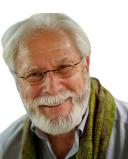Relationships
Our Relationships as the Source of Improvisational Possibilities
That which is between us in an interdependent relationship.
Posted March 31, 2022 Reviewed by Vanessa Lancaster
Key points
- Whenever we interact with another or others, we create a context that is simultaneously part of a broader context.
- Communication is complex, the majority of which is nonverbal, and with our species, there is a strong driving biological urge for connections.
- A multitude of information arises between us when we are mutually learning from each other.
- An important hidden component to having optimal relationships is a liminal pause that can provide limitless opportunities.
“Of all the necessities to human life: water, air, food, shelter — probably the most important is being in relationship with each other.” – Nora Bateson
After 50 years of facilitating communication as an educator, therapist, and community organizer, I have witnessed many contexts where people merely maintain and/or sabotage relationships.
Being a systems thinker interested in helping make a difference, I look for the relationships between those in any social system that may be experiencing discord. Whenever we interact with another or others, we create a context that is part of a wider context. The key is to understand and utilize this part-to-whole reality. Just about everyone can recognize how beneficial interactions are when there is a good vibrational synchronized connection, which offers the opportunity for a harmonious, mutually shared learning moment.

Gregory Bateson, the late anthropologist, once told me that it takes two to know one. Without perceiving the relational context that we are within, we are in danger of being overdependent on content, thus making it impossible to understand the patterns that connect us to larger environments where the interdependent results come to fruition. Content breeds fragmentation and separateness, while relationships give meaning to our intent to connect.
Nature, of which we are a vital part though not very sensitive to its needs, works in a yin and yang/good and bad fashion, with a unity beyond dichotomies. It is sometimes messy yet profoundly beautiful.
Maps, for instance, cannot adequately describe the beauty of nature’s gifts. Yet, when we explore life or nature totally and emerge through interacting with its terrain, the opportunity to improvise, understand, and evolve has infinite possibilities.
Communication is complex, the majority of which is nonverbal, and with our species, there is a strong driving biological urge that desires connections. We have this mind/body potential, in and out of awareness, which manifests by mutually tuning in to our relationships rather than just doing things to others.
Our nervous system has two main parts. The sympathetic revved up, fight or flight mode, and the parasympathetic calm communicable side. Each function automatically adapts to imposed patterns that can easily become addictive and resistant to change. There are only a few ways to get out of that quandary, one being to temporarily alter our breathing, a proven segue to getting unstuck.
I'm an adherent of coherent breathing (developed by Stephen Elliott, President, Coherence LLC), six seconds inhale and six seconds exhale with a positive thought which activates and soothes the vagus nerve. The vagus nerve is the largest part of our parasympathetic nervous system, and it is the nerve of compassion and security. When it is compromised through overexposure to being revved up, it becomes the origin of many emotional issues such as autism, paranoia, anxiety, depression, and poor relationships. It needs the security found in sensitive, respectful relationships.
The polyvagal theory, formulated by Stephen Porges, demonstrates how the vagus nerve has a quest for security and satisfying relationships with others. Dacher Keltner further describes this in Born to be Good: The Science of a Meaningful Life. He explains how the vagus nerve is involved in our metabolism, heart function, brain processes, gut health, and it glows when interacting in the context of compassion.
There's an important hidden component to having optimal relationships. It is a liminal pause if we allow it that can provide limitless opportunities. In this seldom-used gap is the unheard and dormant information that waits to surface within our subconscious. Deep in our subconscious (which processes stimuli at around 40 million per second compared to the 30-40 per second that our conscious mind processes) are the seeds of our evolution.
Bruce Lipton described this astonishing ratio in his book Biology of Belief. I believe that this offers space between the inductive and deductive logic of linear thinking, creating the possibility of uninhibited ecological information to emerge. Here, the random or stochastic resources become available and can be mutually learned. It can be described as an abductive process, something in the middle and beyond logic that desires to be heard and shared interdependently. Nora Bateson, President of the International Bateson Institute, has coined the word “aphanipoiesis,” which she defines as the process of how life coalesces towards vitality and unseen ways.
A multitude of information arises between us when we are mutually learning from each other. It allows the larger contexts of our world to be seen in a way that is more than the sum of what exists. It is ecology in motion, allowing us to understand how we are and can be interdependent. Otherwise, our educational, medical, media, and socio-political institutions will continue to exist with injurious patterns regarding wealth, diversity, and discrimination.
So how, instead, do we take advantage of what our human species innately knows must be altered. It lies in our capabilities to have relationships profoundly that bring forth a celebration of our being interdependent with each other and nature.
However, the biggest challenge to being interdependent is when we communicate in a manner that doesn’t respect mutuality. This becomes the source of not resolving ever-present paradoxes. Carl Jung felt that overcoming them is our main quest for self-fulfillment. Paradoxes are the contradictions that are the source of humor, yet when unresolved in everyday life, they can develop unenviable moments of being in a double bind. This can only lead to injurious consequences that stifle any potential of our ability to rise above adversarial relationships and realize the benefits of being collaborative.
Paradoxes can be confusing and frightening. Consider hearing that "this sentence is a lie." You can laugh at such statements until you no longer can accept both sides of a paradox. This is when there is a need to find a wider context that provides an environment to merge the contradictions through respectful, meaningful, mutually shared relationships. The solutions reside in communication that is not dependent on our egos or individuality.
In those abductive, randomly hidden spaces where resources emerge, stripped of linear cause and effect reasoning, allow us to enter the world of how nature works. The aesthetic ecology of our minds’ desire to understand and learn what lies between us from our mutual caring relationships.




